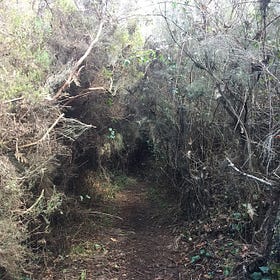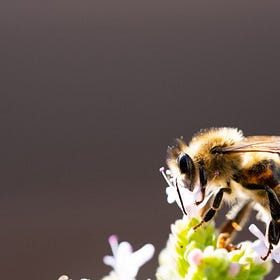First, a tale of love and loss.
The Three Ladies
(an adapted tale from the traditional Irish Three Beeches story)
There on the top of the hill, among the rocks, right at the edge of the spring, lived three Ladies. They danced under the moon and the stars, waving in the wind melodies. They had grown up there, the three sisters intertwined. They talked to the freshwater flowing from the earth’s belly; they listened to the birds and animals that lived there. They courted the fungi that emerged from their bodies. They hugged each other under the ground during the spring storms. They sheltered in the cold of winter, and the spring water soaked their roots in the heat of the hot days.
Many seasons have passed, and their trunks thicken with deep furrows of stories to tell. Old hands, now made humus, had long ago sown and tended them. Together they grew, embraced by the roots and intertwined by the tops, there at the edge of the spring.
The three sons of the man who sowed them inherited the Dancing Beeches. Out of mist and greed, for he had never seen them dance, the eldest son soon cut down one of the Ladies to use its wood. The deaf cries of his sisters tried to prevent the worst, hitting him with twigs and branches. But the man insisted, and the sister’s body fell, still alive, on the stone floor. Thanks to the village men, they cut off her torso and dragged the pieces away before the distressed presence of her grieving sisters. Together in their pain, they called on the wind, which raised a storm. The men fled, saying that the place was cursed.
People stopped coming there. A few years passed, and the two Ladies started dancing again despite the pain and grief over their sister’s loss. Their whole woody, tree-like bodies vibrated and resonated with the elements, and they danced to the rhythm of life around them. But the summers began to heat up, and in one of those hot, dry seasons, the spring ran out. The water evaporated, and of the whispers of water, only the memory remained. The voracious and blazing fire seized the opportunity and swept through the area. Surprisingly, two brothers appeared and took care to extinguish the flames, and the two Dancing Beeches, frightened and covered in ash, survived. But so did the torrid, dry days. One of the two sisters began to dry up, its leaves turning yellow and falling off. She became rigid and could no longer dance. It shriveled, withered and dried up. She was standing but lifeless. Eventually, it tumbled over, and the last Lady heard its fall, smelling of sadness and longing in its woody heart.
Many seasons passed, several storms howled, and the Lady no longer had anyone to hold her roots. But her trunk had grown as the canopy reached higher and the roots went deeper. Her shade sheltered many burrows, shelters, and nests. Her body harbored and nurtured life. And she danced again. On full moon nights, the village children would see her there on top of the hill, moving by the blows of the wind, dancing under the moon and the stars.
After a few cold and rainy winters, fresh water poured back from the spring, and little shoots emerged from the stony ground. New hands tended them, and so they grew. Young Beeches, accompanied by the last Lady, continued to dance, who taught the little sprouts this place’s rhythms and the old stories. She told them the stories of her sisters, how they danced together, and of the human hands that both care and destroy. At the end of her days, her body lay on the ground in the shade of a forest of Beech, Chestnut, and Oak trees, right there at the edge of the spring.
Perception Crisis
We have arrived here in the 21st century, and we understand that the crisis is one of perception of the forest as just a resource, or the illiteracy of confusing monoculture with a forest full of biodiversity.
This infographic only reaches the 15th century, not even close to the monoculture and mining policies of the late 20th century. It serves as a basis for understanding that it is not a question of forest management, but of the understanding of what a forest is.
When it is silenced as an inert resource for exclusively human use, it is emptied by our own hands. In the necessary great cycles of regeneration, only the stones can witness a change.
Further reading:
Welcome to the first Eco-Mythology Gathering in Portugal
This is a pioneering gathering in Portugal about the need to intertwine Ecology and Mythology; about the importance of how we tell stories, be they personal, cultural, social, scientific, or even political. ACCESS the Event here. Twenty-one 45 min recorded presentations, in English and Portuguese (English subtitles available), for you to watch at your ow…
Granny's Dream
The midday heat made her sleepy. With her wild, rough skin warmed by the sun, Granny dozed off, falling into the dreams of the world, claiming deep memories, recollections of her long life. The daydream brought her back to when she was still sovereign, when men called her Elder. She missed the shady presence of ancient oak and chestnut trees and the fres…
European self-colonization
European self-colonization has been a domestication narrative, and it’s been a long time since it began. This severance, destruction, absolutism, and violence have been brewing for millennia. But indeed, what we crave the most is the long and deep embrace that nurtures our souls again
Eco-anxiety or cultural apocalypse
Eco-anxiety has been my companion for more than a decade. It brings me down in sorrow and grief for a living, complex but the collapsing world. Some days I barely sleep, and others don’t have the strength to come out of bed. Sometimes unbearable, this feeling has a weight of its own, crushing (my) reality.
Rooting out all weeds
How does an idea make you feel? What’s the weight of your joy? Is there a path with no weeds? What is the texture of your sorrow? What is the color of your memories? Is there a way without detours? I often pass through portals of living concepts, ideas, symbols, and metaphors within my writings and teachings.
Tamed Spirits
Bees I sit barefoot on the ground, watching bees dancing amidst the crawling weeds, small flowers, tiny leaves, and mushrooms. All the ground-level diversity envelops various insects, from crawlers to flying pollinators. The ground is teeming with life, which is merely above the surface.
The “landscape face”
In Portuguese, we have a familiar expression, “being with a landscape face.” This relatively common expression is used when you feel someone is extremely thoughtful, looking lost, and abstracted in some “unconstructive” or unhelpful concern or thought. It can also mean “pretending that nothing happened”, “acting that it’s not up to us”, that…
The Last Wild River
The deep valley rips for about 120 km from north to south, and brave and free waters run through its ancient stone gut. The deep, concave hollow of the bank harbours many old stories, which the tumultuous waters carry in their memory and distribute with each current and twist.
We’ve lost many worlds.
Several indigenous peoples worldwide have this saying, “We’ve lost many worlds.” I’ve been sitting with this potent saying for some time now. First, it stung like hell, for its texture was of tragedy, death, and loss. It came as an ancestral warning of life itself — a lesson of the deep past, a cautionary tale of disast…
References:
https://www.publico.pt/2017/12/09/ciencia/noticia/como-se-extinguiu-o-ursopardo-em-portugal-1795132
Jorge Paiva — “A relevância da fitodiversidade no Montemuro”
Francisco Álvares e José Domingues — “PRESENÇA HISTÓRICA DO URSO EM PORTUGAL E TESTEMUNHOS DA SUA RELAÇÃO COM AS COMUNIDADES RURAIS”
M. T. ANTUNES — “Castor fiber na gruta do Caldeirão, Existência, distribuição e extinção do castor em Portugal”
Nicole Devy — Vareta — “Para uma geografia histórica da floresta portuguesa, AS MATAS MEDIEVAIS E A «COUTADA VELHA» DO REI”
Nicole Devy — Vareta — “Para uma geografia histórica da floresta portuguesa, DO DECLÍNIO DAS MATAS MEDIEVAIS À POLÍTICA FLORESTAL DO RENASCIMENTO (séc. XV e XVI)”













